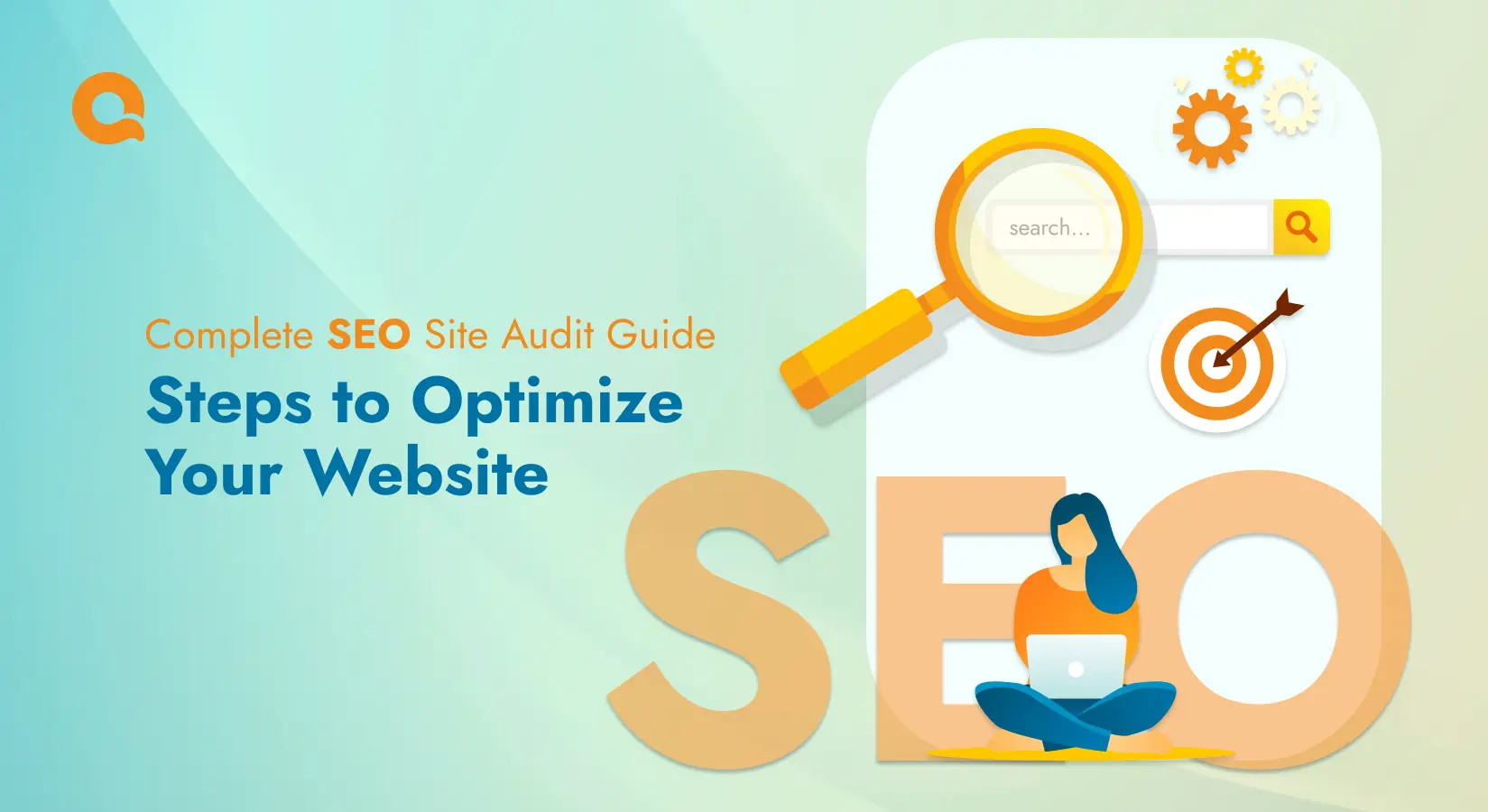
In today’s competitive digital landscape, optimizing your website for search engines is crucial to ensuring online success. A complete SEO site audit helps you identify areas that need improvement and enhance your site’s performance, making it more search engine-friendly. From technical SEO to on-page optimization and content quality, a thorough audit will uncover gaps that might be affecting your site’s ranking. This guide walks you through the essential steps of an SEO site audit, from crawling and indexing to backlink analysis and performance monitoring, providing practical tips to optimize your website and drive better results in search engine rankings.
1. Website Crawling & Indexing
One of the first steps in an SEO site audit is ensuring that search engines can properly crawl and index your website. If your pages aren’t indexed, they won’t appear in search results.
Key Actions:
- Use tools like Google Search Console and Screaming Frog to identify crawling errors, such as pages blocked by robots.txt or pages with 404 errors.
- Ensure your website’s XML sitemap is correctly set up and submitted to search engines for better indexing.
Example:
Google indexes a website with 100 pages but only 60 will miss out on ranking opportunities for 40 pages. Fixing indexation issues can lead to better visibility.
2. Technical SEO Check
Technical SEO is essential for enhancing website performance and ensuring seamless functionality. It involves checking site speed, and mobile-friendliness, and resolving issues related to broken links and redirects.
Key Actions:
- Enhance your site’s loading speed with tools such as Google PageSpeed Insights. Compress images, enable browser caching, and minimize JavaScript to enhance loading times.
- Check your website’s mobile-friendliness using Google’s Mobile-Friendly Test. Make sure your website’s design is mobile-responsive and adjusts smoothly to various screen sizes.
- Fix any broken links (404 errors) and update old redirects to prevent users from landing on error pages.
Example:
If a website takes longer than 3 seconds to load, users are likely to bounce, affecting rankings and traffic. Optimizing speed can boost user experience and SEO performance.
3. On-Page SEO
On-page SEO is essential for optimizing individual web pages. It focuses on optimizing title tags, meta descriptions, header tags (H1, H2, etc.), and using relevant keywords in content.
Key Actions:
- Refine your title tags and meta descriptions with targeted keywords to boost click-through rates.
- Ensure content includes target keywords naturally in headings and text without keyword stuffing.
- Use alt tags for images, and name images with descriptive filenames for better SEO.
Example:
A blog post titled “Best SEO Strategies” should have a title tag like “Top SEO Strategies to Boost Website Ranking in 2024.” This concise and keyword-rich title will attract more clicks and improve rankings.
4. Content Quality Analysis
Creating valuable, well-organized content is crucial for SEO. Search engines favor websites that offer useful and structured information. Ensuring content quality involves checking for duplicate content, removing thin pages, and offering meaningful content.
Key Actions:
- Leverage tools such as Copyscape to identify and eliminate duplicate content.
- Identify thin pages (pages with very little content or no value) and either update or remove them.
- Create content that addresses user intent, answers questions, and provides value.
Example:
A product description with only 50 words on an e-commerce website might be considered thin content. Expanding it to 300-400 words with details, benefits, and FAQs will improve SEO.
5. URL Structure & Navigation
A clean and well-organized URL structure is crucial for both users and search engines. URLs should be descriptive, short, and easy to understand. Proper site navigation ensures that both users and search engines can find your important pages.
Key Actions:
- Ensure that URLs are SEO-friendly by making them descriptive and including relevant keywords. For example, use “/best-seo-tools” instead of “/page?id=123”.
- Fix any orphaned pages (pages that are not linked internally) to improve discoverability.
- Create a clear navigation menu and internal linking structure so users and search engines can easily access key content.
6. Backlink Profile Audit
Backlinks continue to be one of the most influential factors in determining search rankings. Analyzing your backlink profile helps you understand the quality of the websites linking to your site and allows you to disavow any toxic links that may harm your rankings.
Key Actions:
- Utilize platforms like Ahrefs, Moz, or SEMrush to assess the quality and impact of your backlink profile.
- Identify and remove any spammy or toxic backlinks that may harm your SEO.
- Focus on acquiring high-quality backlinks from relevant and authoritative websites to improve your domain authority.
Example:
A backlink from a reputable site like Forbes can dramatically boost your SEO, while links from spammy, irrelevant sites can have the opposite effect. Disavow low-quality links and focus on building quality relationships.
7. Mobile Usability
With the rise of mobile-first indexing, ensuring that your website is mobile-friendly is crucial. Google now gives preference to mobile-optimized websites for better rankings.
Key Actions:
- Ensure that all pages are responsive and provide a seamless experience on mobile devices.
- Use tools like Google’s Mobile-Friendly Test to identify and resolve mobile usability issues, such as improperly sized images or buttons that are too close together.
Example:
A website that looks great on desktop but doesn’t function well on mobile may see a drop in rankings. Ensuring that forms, menus, and content are optimized for mobile can enhance user experience and rankings.
8. Site Security (SSL)
Site security is a significant ranking factor. Having an SSL certificate (making your site HTTPS rather than HTTP) ensures that your website is secure, builds trust with users, and improves SEO rankings.
Key Actions:
- Install an SSL certificate to ensure your website is accessible via HTTPS.
- Regularly update security protocols and check for vulnerabilities to protect your site from attacks.
Example:
A website without an SSL certificate may show a “Not Secure” warning in browsers, which can deter users. Installing SSL not only secures the site but also gives a ranking boost.
9. User Experience (UX)
Google values websites that offer a smooth, intuitive user experience. A well-designed website with clear navigation, fast load times, and compelling calls to action (CTAs) is more likely to engage users and rank higher.
Key Actions:
- Optimize page layouts to guide users effectively. Ensure the website is easy to navigate, with a logical structure.
- Use visual cues, such as buttons and images, to engage users and improve conversions.
- Test and optimize your website for faster load times and better usability.
Example:
A website with confusing navigation and slow-loading pages is likely to have a high bounce rate. Improving the site’s design and making it more user-friendly can increase engagement and rankings.
10. Analytics & Performance Monitoring
Regularly monitoring your site’s performance using analytics tools helps you stay on top of potential issues and improve your SEO over time.
Key Actions:
Implement Google Analytics and Google Search Console to monitor website traffic, analyze user behavior, and track keyword performance.
Example:
By analyzing metrics in Google Analytics, you might discover that a specific page has a high bounce rate. Improving the content, page speed or UX could lower the bounce rate and lead to higher rankings.
Conclusion
A comprehensive SEO site audit is crucial for identifying and resolving issues that may be hindering your website’s performance. By addressing technical SEO, improving content quality, optimizing on-page elements, and ensuring a strong backlink profile, you can significantly enhance your site’s visibility and rankings. Regular audits will keep your website up to date with the latest SEO best practices, ensuring long-term success in search engine performance. Stay proactive, monitor your progress, and continuously refine your strategy to achieve sustainable growth and online success.
Frequently asked questions
An SEO site audit is a detailed analysis of a website's technical and on-page elements to identify issues that may be affecting its search engine ranking. It helps ensure that your site is fully optimized for better visibility, performance, and user experience.
It's recommended to conduct a full SEO site audit at least twice a year, or whenever significant changes are made to the website, such as design updates, content revamps, or major technical changes.
An SEO audit focuses on areas like technical SEO (site speed, mobile-friendliness), content quality, on-page optimization (meta tags, headers), backlinks, and user experience (UX) to improve search engine ranking and performance.
While tools like Google Search Console, Screaming Frog, and SEMrush can help you perform basic audits, working with SEO professionals can give you deeper insights and more effective solutions for optimizing your website.






